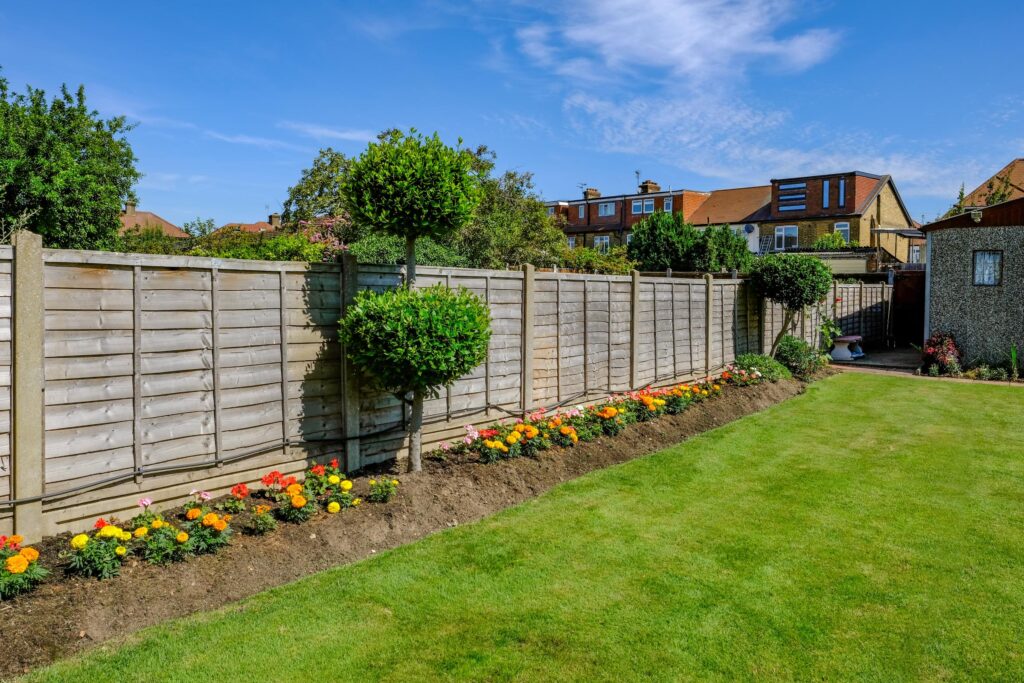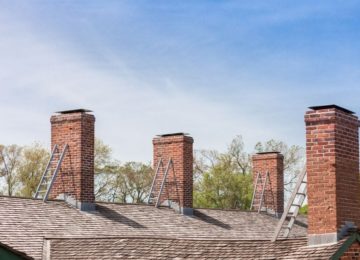As a fencing contractor who has planned, installed, and repaired thousands of fences, I get asked the same question each week: do I need planning permission for my new fence? The answer is often no, but there are clear rules you should know before you start. This guide sets out those rules in plain English so you can move ahead with confidence. If you are still weighing up options and need local support, our fencing near me page explains how we plan and deliver projects across the region.
What this guide covers
I will run through fence heights, highways and visibility rules, corner plots, listed buildings and conservation areas, like for like replacements, neighbour issues, and what happens when you do need permission. I will also touch on materials and cost, because many homeowners ask about composite fencing cost and whether it affects permission. It does not. Planning looks at height, location, and impact, not the material.
The core height rules in England
In most cases you can put up or replace a garden fence without planning permission. The key rules are simple:
- Up to 2 metres high within your garden or beside a side or rear boundary is classed as permitted development.
- Next to a highway used by vehicles, or a footpath that forms part of that highway, the limit is 1 metre.
- If you want to go higher than these limits, you will need planning permission.
Height is measured from the natural ground level on the higher side. On sloping ground, step the fence so each bay sits within the limit. Trellis counts toward the total height. If you fit a 1.8 metre panel and add a 0.3 metre trellis on top, the total is 2.1 metres, which needs permission unless it is not next to a highway and you get approval. Keep that in mind when you plan privacy screens.
Front gardens, corner plots, and visibility
Front gardens near footpaths and roads cause the most confusion. The 1 metre rule next to a highway protects visibility at junctions and driveways. If your home sits on a corner plot, the fence line that faces the road is still bound by the 1 metre limit where it meets that highway or its footpath. Inside the plot you can often step up to 2 metres once you are no longer adjacent to the highway. The safe approach is to keep the front run at 1 metre to the building line, then increase height along the side boundary as it moves away from the road.
Gates that open onto a highway should open inwards. If you need a solid gate for security, check sightlines so you do not block views when exiting a drive. Simple cut outs, hit and miss styles, or a modest set back can help.
Listed buildings, conservation areas, and Article 4 directions
If your property is listed, you need consent to erect, alter, or demolish any fence within its curtilage. That is a hard rule. In conservation areas the normal height limits still apply, but local authorities can remove permitted development rights using an Article 4 direction. If an Article 4 direction applies, you must get permission even for work that would otherwise be permitted. The council will tell you if this affects your street. When clients ask about fencing contractors near me in historic areas, I advise them to check this before they order materials, as lead times and costs can rise if you need revised drawings.
Replacing an existing fence like for like
If you replace an old fence with the same height and layout, you do not need permission. If you raise the height above the limit, you do. Many homeowners switch from 1.8 metre lap panels to 1.8 metre closeboard with a cap and gravel board. That is fine, as the finished height stays within 2 metres. Swapping a low front picket for a 1.5 metre solid panel beside the pavement is not fine. The finished height next to the highway would exceed the 1 metre rule, so you would need permission.
Who owns the boundary and where the line sits
Planning rules do not decide boundary ownership. Your title plan and any boundary agreements do. Posts are best placed on your side of the boundary, with rails facing inwards. If there is a shared wall or fence on the line and you both agree to replace it, set the new posts on one side by consent and record it in writing. Fences are not covered by the Party Wall etc. Act unless you build a masonry party fence wall, which is a different structure. Timber posts and panels fall outside that Act.
Neighbour relations and good design
You do not need your neighbour’s permission to build a fence on your land, within the height limits. That said, a short talk saves a long dispute. Agree the line, the height, and the face of the fence. Keep the neat face to your neighbour where you can. If your neighbour wants a taller fence, they can add a screen on their side, on their land, within the rules. If both of you want a fence over the limit, you can submit a joint planning application that sets out the benefit to both plots.
High hedges and light
High hedges are a separate issue. If a hedge over two metres blocks light and affects amenity, the council can intervene under the high hedges rules. A fence within the normal height limits will not trigger that process. If you mix hedge and fence, measure the fence height alone for planning. The hedge height does not form part of the fence for the purpose of permitted development.
Materials, looks, and composite fencing cost
Planning rules do not control materials for garden fences in standard cases. You can fit timber, metal, or composite as long as the height and siting meet the limits. Composite fencing cost varies with brand, height, and post system. From a legal view it makes no difference. From a build view, composite needs tight tolerances. Posts must be straight and set to depth. Strong footings matter in exposed sites. When clients ask me to compare composite and timber, I set out the cycle of care and the expected life. Timber costs less to buy and install. Composite can save time on maintenance. The right choice depends on your site and your plans.
Drainage, services, and safe digging
Before you dig, check for drains, water, gas, power, and data. Most runs follow straight lines from the house to the street, but some do not. Lift inspection covers and look for bends. Use hand digging in the first 600 mm if you suspect services in the area. In older streets you may find shared drains on the boundary. If a drain runs where you plan a post, shift the post or use a concrete spur and a shorter panel to bridge the route. Safety first. It keeps the job on time and avoids a repair that no one wants.
Retaining walls and level changes
A fence on top of a retaining wall needs care. The height is measured from the higher ground level. If the wall holds back your neighbour’s garden, the fence height counts from their side, not yours. That can bring you over the 2 metre limit even when the fence looks modest from your side. In that case, step the fence down in bays or set the posts into the lower ground if you have access. A handrail style top run can give privacy without a full solid screen.
Wildlife and security
Homes near open land or rail lines often ask for more security. A solid 2 metre fence at the rear is common and sits within the rules when it is not next to a highway. Add a heavy duty gate with a secure lock and a self closer for dogs. For wildlife corridors, leave a small 130 mm by 130 mm hedgehog gap at the base in a couple of bays. It helps the local habitat and does not affect security. If you need garden zoning, use hit and miss or slatted sections to allow air to move while you define the space.
When you need planning permission
You will need planning permission if any of the following applies:
- The fence is over 1 metre next to a highway used by vehicles or its footpath.
- The fence is over 2 metres anywhere else on the plot.
- The property is listed and the fence sits within its curtilage.
- An Article 4 direction removes permitted development rights for your street.
- You want to replace a low front boundary with a higher solid fence that exceeds the 1 metre rule.
- You want a fence on a retaining wall where the measured height exceeds the limit.
- The council has set a condition on a past planning consent that controls boundary treatments.
If one of these applies, do not panic. Most applications for modest, well designed fences gain approval when you show the need, the height, and the impact on visibility.
How to make a strong planning case
Keep the design simple and in scale with the street scene. Set the fence back behind the visibility splay at a junction or drive. Use open styles near corners if you need height for pets. Provide a short statement that explains the need, such as privacy, security, or noise from a bus stop. A clear drawing with heights to ground level helps the officer judge the impact. As local fencing contractors we prepare these notes for clients who want help with the process and we keep the scope tight to speed up a decision.
Measuring height the right way
Use a tape measure at several points. Take the height from the higher side of the ground to the top of the structure, including caps and trellis. If the ground varies by more than 150 mm across a bay, step the fence. For sloped sites I set out posts by laser and cut rails to suit. That keeps each bay within the limit and avoids a wavy top line.
Fence repair near me vs full replacement
Small repairs do not trigger planning issues if they keep the same height and siting. A rotten post can be repaired with a repair spur and a new gravel board. If you change the layout, increase height, or move the line onto a boundary, treat it as a new fence and check the rules. Many clients search fence repair near me and expect a fast fix. A site visit helps us judge whether a repair gives you enough life or if a new run at the correct height is the better investment.
Noise screens and acoustic fencing
Acoustic panels help near busy roads and rail lines. They are heavier and need deeper posts, but they follow the same height rules. If you need more than 1 metre next to a highway, you will need permission. In back gardens where the limit is 2 metres, acoustic panels can meet the need within permitted development. Keep gaps sealed at the base and use solid posts or sleeves to stop sound leaks.
Corner cases that trip people up
Shared driveways can be highways if they allow public access for vehicles. In most private estates a shared drive is not a public highway, so the 2 metre rule applies, but check your deeds and the estate plan. If your front garden has a deep set back, you may be able to bring a higher fence across the mid point of the side boundary where it is no longer adjacent to the highway. A short run of low fencing near the front line, then a taller section further back, is a common and lawful layout.
Gates, access, and right of way
A public right of way across your land changes things. You cannot obstruct it. If a right of way runs along a boundary, your fence can sit inside your line, but you must not narrow the route below its legal width. If a shared path with neighbours exists by covenant, keep the width and access in line with the agreement. Fit self closing gates where pets or children use the route.
What a council looks for
Officers look for three points: does the fence meet permitted development, if not, does it harm visibility or the street scene, and is it in keeping with the area. If you can show no harm to sightlines and a modest design that respects the surroundings, approval often follows. I include photographs from both directions at the highway if sightlines are in question. A simple site plan with distances to the pavement edge helps.
Timescales and costs
A householder planning application can take 6 to 8 weeks. Fees are set at a national rate for this type of work. If you need drawings, allow time for a measured survey. From a build view, lead times depend on materials and the season. Winter storms make diaries busy, and fence company near me searches spike. Good planning and early orders keep things moving.
Sustainability and neighbours’ amenity
Use responsibly sourced timber with pressure treatment. In shade, choose panels that allow air to move so algae does not take hold. Keep the height to the minimum you need for privacy. Where a neighbour has a kitchen window near the boundary, a full 2 metre screen can be fine, but think about light. A hit and miss panel often gives privacy without a heavy look. This balanced approach makes a stronger case if permission is needed.
Security for pets and families
Where dogs or children use the garden, the practical need for a sturdy fence is clear. State this in any planning notes. For dogs that jump, a 1.8 metre panel with a smooth cap makes sense. Keep rails on your side so there are no steps. At the base, use concrete gravel boards to avoid rot and reduce digging. For cats, use inward facing rollers on your side rather than extra height.
Fence installation near me: getting the job built
When the design is agreed, mark the line and check levels. Set posts to the correct depth for your soil. Clay soils need deeper footings than free draining ground. Use concrete or composite posts where you want minimal maintenance. Use timber where you need a softer look. Set the gravel boards level, add panels, then fix caps and trims. I check plumb and level at each bay so the final run is straight. If you want to see how we plan a fence installation in a busy street setting, our Leeds page shows the approach we take in tight plots.
When local help saves time
Search terms like fencing companies near me, fencers near me, fencing contractor near me, and fencing contractors near me exist for a reason. A local team knows the ground, the winds, and the byelaws. We also know which corners and sightlines raise questions for a planning officer. If you need a fast read on risk, get a site visit. A calm, clear plan reduces delays and costs.
Choosing the right style for the plot
Solid closeboard gives privacy and strength. Slatted fencing gives light and a modern look. Hit and miss gives wind relief. Metal railings work well on frontages at 1 metre near highways where you still want a smart boundary. Composite suits low care gardens. Each style can meet the rules when you set the height and siting with care. If security is the goal, think about gate locks, hinge bolts, and post depth, not only panel type.
Common planning and build mistakes to avoid
- Setting a 1.8 metre solid panel hard against a pavement on a corner plot.
- Adding trellis that pushes the total height over the limit.
- Measuring height from the lower side of sloping ground.
- Building on top of a retaining wall without checking measured height from the higher side.
- Moving the fence line onto a neighbour’s land by mistake.
- Ignoring a listed building curtilage or an Article 4 direction.
- Fitting heavy panels on shallow posts in exposed sites.
- Forgetting visibility when a gate opens onto a highway.
Maintenance and long term care
Treat timber ends and cuts. Keep soil and mulch off the base of panels. Use post caps to shed water. Rinse composites to remove dust and pollen. Check fixings after the first winter. A small check each spring avoids bigger repairs after storms. If you do need help and you search fence repair near me, look for firms that set posts to the right depth and use proper repair spurs, not short backfills.
Bringing it all together
Planning rules for fences in England are direct once you see how height and location work. Keep front and roadside boundaries to 1 metre unless you have approval. Keep side and rear runs to 2 metres. Measure from the higher ground, include trellis in the total, and take care on retaining walls. Check listed status and any Article 4 direction. Talk to neighbours, then build a straight, well braced fence that suits the site. If you want a second view or need help with drawings, local teams like ours are ready to guide you. You can start with our main page for fencing contractors to read how we plan, cost, and build with care.
Final checklist
If you plan a new fence, ask yourself:
- Is any part next to a highway or its footpath?
- Does any bay exceed 1 metre there or 2 metres elsewhere?
- Is the property listed or within a controlled area?
- Does a retaining wall change how height is measured?
- Have I checked services, drains, and visibility at the drive?
- Have I agreed the line and height with my neighbour?
- Is my design strong enough for wind and pets?
- Do I need a simple note or drawing to support an application?
Answer those points and you will avoid delays. When you need a skilled team to deliver the fence you planned, a calm search for a fence company near me will point you to firms with the right track record. The right plan and the right build go hand in hand.











